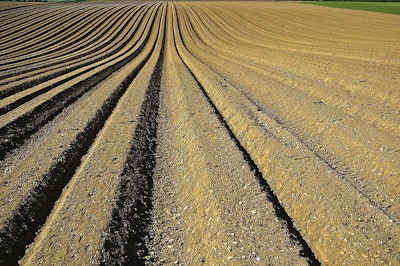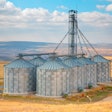
US Crop Progress Update as of April 18, 2021
Despite concerns about planting progress, the US corn crop was 8% planted, which was in line with the average pace and ahead of last year.
Soybean planting matched expectations at 3% complete versus the 2% average.
Sorghum plantings were 15% complete, up only 1 point versus a week ago and remain behind the average pace.
The oat crop was 50% planted, running slightly ahead of the 42% average and well ahead of last year’s pace at 38%.
The winter wheat crop was 10% headed, which is behind the 14% average.
Spring wheat planting advanced 8 points to 19% complete, which is ahead of last year’s 7% and the average at 12%.
Barley plantings were 26% done; that is ahead of last year and the average.
Cotton planting continues to be slightly ahead of the average pace of 9%, and is 11% complete.
FBN’sTake OnWhat It Means:Despite cold-weather concerns, the overall dryness in much of the US is allowing planters to move, especially in the Northern Plains. Market chatter has been present about delayed plantings due to cool weather but so far, planters are running in line to above the average pace. Our main concern for now is the lack of moisture in parts of the US, but especially the Dakotas south to Texas. Nothing in the progress report pointed to a shift in our fundamental outlook. There are freeze concerns in the forecast which will be eyed closely.
China Soy Imports Switch to U.S.
China's March soybean imports from Brazil plunged as rain delayed some shipments.
China imported 315,334 tonnes from Brazil in March, down 85% from 2.1 million tonnes last year.
China imported 7.18 million tonnes of soybeans from the US in March, up 320% from last year’s 1.71 million tonnes.
China's total imports of soybeans in March increased 82% to 7.77 million tonnes.
An outbreak of African swine fever has affected at least 20% of the breeding herd in northern China, reducing soymeal demand.
Increased use of wheat in animal feed has also curbed soymeal demand, though government wheat auctions have slowed in recent weeks.
FBN’sTake OnWhat It Means:China’s soy demand appears to be picking up as meal and bean oil push higher, improving crush margins as beans become more readily available. Meanwhile, US crushers are having a hard time replacing supplies as stocks tighten, and continue to push for beans, trying to divert cargoes from the export market.
FBN Market Advisoryservices are offered by FBN BR LLC, dba FBN Brokerage, FBN BR and FBN Market Advisory (NFA ID: 0508695)
The risk of trading futures and options can be substantial and may not be suitable for all investors. Past performance is not necessarily indicative of future results.
This is not an offer or solicitation in any jurisdiction where we are not authorized to do business or where such offer or solicitation would be contrary to the local laws and regulations of that jurisdiction, including, but not limited to, persons residing in Australia and Canada.







.jpg?auto=format%2Ccompress&fit=crop&h=167&q=70&w=250)











